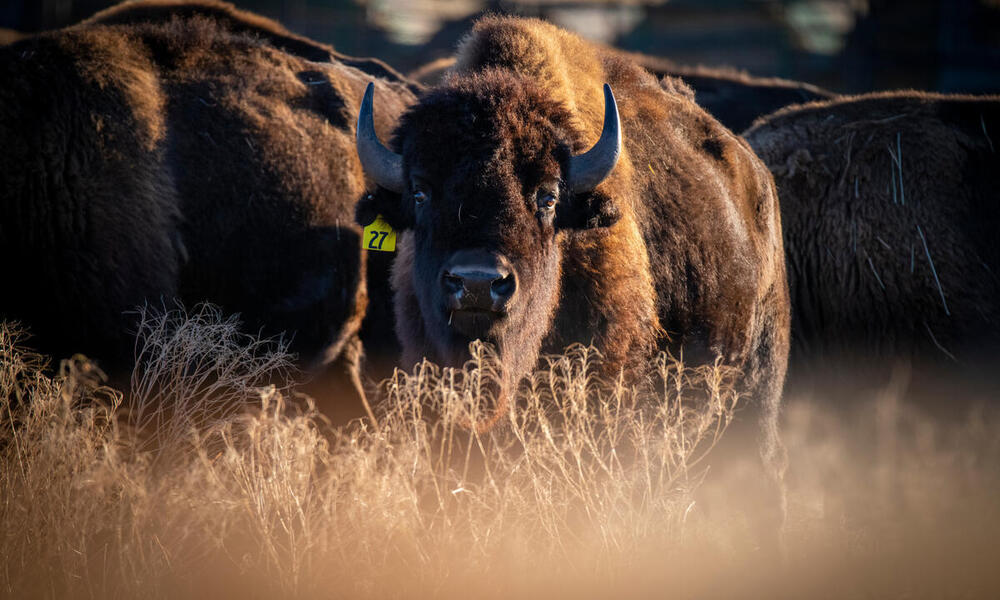Prior to the bison’s return to Wolakota, the land was primarily leased to non-tribal members for cattle management, and due to long-term overgrazing, the grasslands on the range were highly degraded. The range lacked a healthy level of functional diversity within the plant community, with few deep-rooted, warm-season grasses and an overabundance of shallower-rooted, cool-season species and/or annual plants. In addition, plant vigor was reduced, meaning the plants were often stunted when fully grown. This was evident in the lower availability of forage and seed production. According to a forthcoming REDCO report on the state of the Wolakota Buffalo Range, while “the drought in 2021 certainly affected plant vigor, the lower than anticipated forage production figures were indicative of longer-running issues related to the history of grazing management in this area.” For example, when lands are grazed continuously and intensively, the plants do not have an opportunity to gather and store energy in their roots making it available for future growth and seed production.
“The ecological monitoring taking place at Wolakota allows those managing the land and the buffalo to gain a more intimate knowledge of the changes that are taking place as the bison are brought back and the herd grows,” stated Dennis Jorgensen, Bison Program Lead at WWF’s Northern Great Plains Program. “This understanding can be rooted in traditional knowledge and western science, and in both cases, it will contribute to charting a better path forward for the recovery of the Wolakota Buffalo Range and all the beings that call it home.”
The results are already showing signs of promise. In 2021, hardly a year after bison were reintroduced to the Wolakota range, signs of improvement were already appearing on the land. There were reductions in bare ground at several sites and improved ground cover—the native grassland plants were returning. Although the region continues to experience drought, the positive results suggest that there is more moisture in the soil than in previous years. In the years to come, grazing strategies designed to maximize days of growing season recovery between repeated grazing of individual plants will also contribute to ongoing improvements in plant and landscape health.
“We are going to ensure the buffalo are taken care of in a way that is culturally appropriate. Part of our instructions are to treat buffalo as buffalo. Don’t treat them like cattle,” said Clay Colombe CEO of REDCO. “That means we have to raise them differently from how a lot of people do buffalo ranching. We have to make sure they have big open spaces to use the land how they need to.”
In addition to typical Western rangeland monitoring, Wolakota is committed to utilizing Lakota traditional ecological knowledge to assess the health of the land. By working with knowledge keepers and medicine men, staff will track the presence of plants and animals that are of particular interest to the Lakota. “The Western metrics are great for measuring certain things,” said Colombe. “But, as Lakota, those things don’t really matter unless we are also preserving and strengthening our way of life.”
